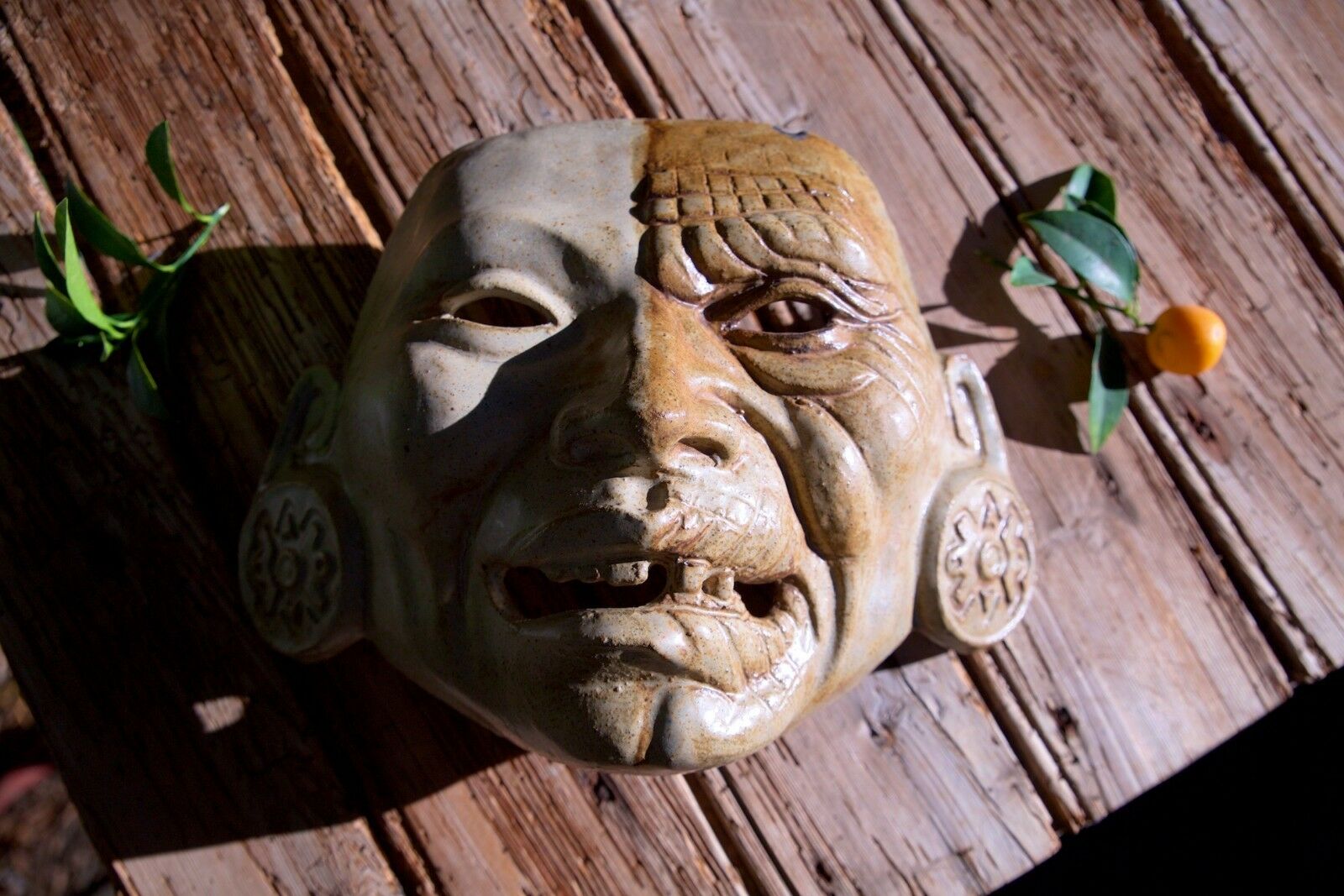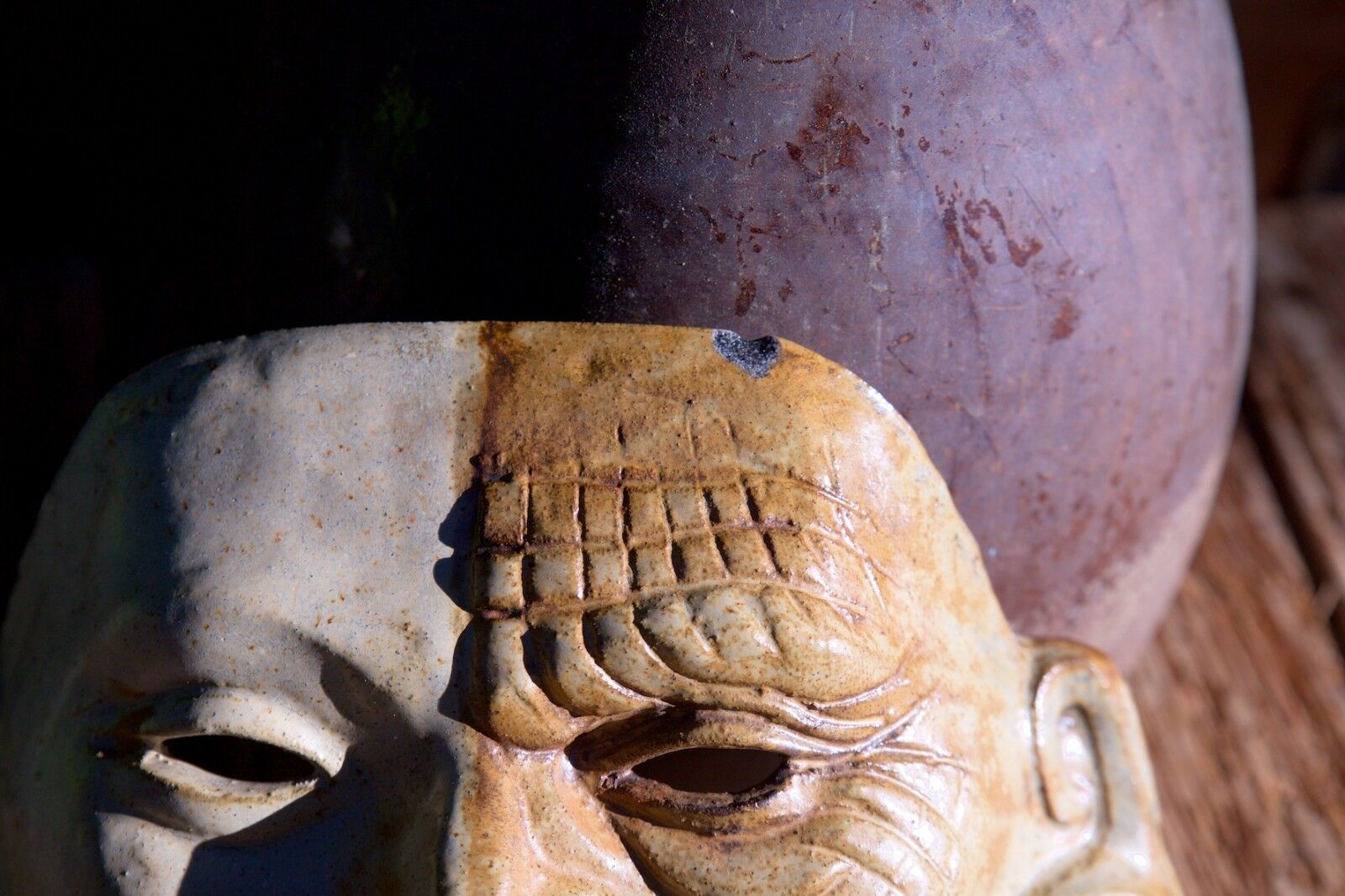-40%
Zarco Guerrero Collectible Ceramic Tribal Art Mask Latin Artist Signed “El Zarco
$ 448.8
- Description
- Size Guide
Description
For sale is an amazing Vintage Collectible Ceramic Tribal Art Mask measuring approximately 8 1/2” by 11”. This beautifully hand-crafted mask eloquently depicts the aging process as one side is that of a young indigenous man, and the other side shows the same man, aged, wrinkled and missing teeth yet full of life and character. Purchased at an Art Estate Sale, this mask is reported to be a hand-crafted Art piece by famed Artist Zarco Guerrero and one of the Artist’s older original creations. It is certainly one of Guerrero’s most expressively intricate, as even with its hollow eyes, the face displays great emotion and depth. A perfect addition to any collection, this amazing one-of-a-kind mask has is signed “El Zarco” and has holes on the back through which a wire can be laced for hanging. Please examine all photos carefully prior to purchase.About the Artist: Zarco Guerrero
From the Artist’s website: ZarkMask.com.
Zarco Guerrero is a renowned mask-maker and performance artist who was born in Mesa, Arizona, but has spent much time studying his craft internationally dedicating his artistic endeavors to create positive social change through the arts adopting Cesar Chavez’s ideology to use his art for social service. Guerrero’s art includes music, poetry and theater. He is the founder of Xicanindio Artes (now Xico, Inc.), the Cultural Coalition, Inc, and has been instrumental in the development of Latino Arts statewide. He has exhibited and received international acclaim and many prestigious awards. In 1985 PBS broadcast a one hour documentary about his art entitled “The Mask of El Zarco”. He received the Japan Fellowship from the National Endowment for the Arts, The Arizona Governors Arts Award, the Artistic Excellence Award from American Hispanics in Higher Education and the Esperanza Teacher of the Year Award among many others. Guerrero’s career as a professional artist began in 1972 when he had his first One-Man Exhibition of bronze sculptures and ceramic masks in Cuernavaca, Mexico where he had moved from Arizona in 1972 after traveling in Europe and the U.S. for one year and studied at the De Aguila Bronze Foundry in order to learn the art of bronze casting and to study the Post Revolution Muralist Movement of Mexico. Under the guidance of Mexican master sculptor Francisco Zuñiga, who also produced his works at the De Aguila Foundry, he completed a collection of 20 medium size figurative sculptures. The underlying theme of his sculptures was the human condition, particularly the situation of indigenous people in Mexico and Latin America. As a visual artist Guerrero adopted the philosophy of art with a social conscious and adhered to the ideology of David Alfaro Siqueiros, while being profoundly inspired by such artists as Kati Kollowitz and Goya. During the four years that he worked in Mexico, Guerrero lived in Tepoztlán, Morelos , a Náhuatl indian Village. In fact, it was in Mexico that he first formed relationships with mask makers from Tepoztlán and the surrounding states of Guerrero and Michoacan. Fascinated by the rich cultural legacy of the mask in Mexico, he adopted the mask as a form of sculptural media.
“Art is a statement that goes beyond mere entertainment and the decorative unveiling of the sordid and the beautiful. The primordial growl of the mask is a reminder of our origins and kinship to the beast. The agony in some of the faces valiantly dare us to become aware that we are at least existentially responsible for the awesome suffering of the majority of the earth?s inhabitants and the destruction of the environment. In our plastic and polyester charades there will be those who wish to ignore the indicting eyes and wrinkled visages that seem to have witnessed the ravages and pillages of History. With integrity as an essential aspect of aesthetics, art should move us and in doing so force us to confront our notion of self and society in relation to the earth. In expressing the paradox of being, the mask challenges us to struggle, articulate and confirm the sanctity of life.”
Zarco Guerrero




















